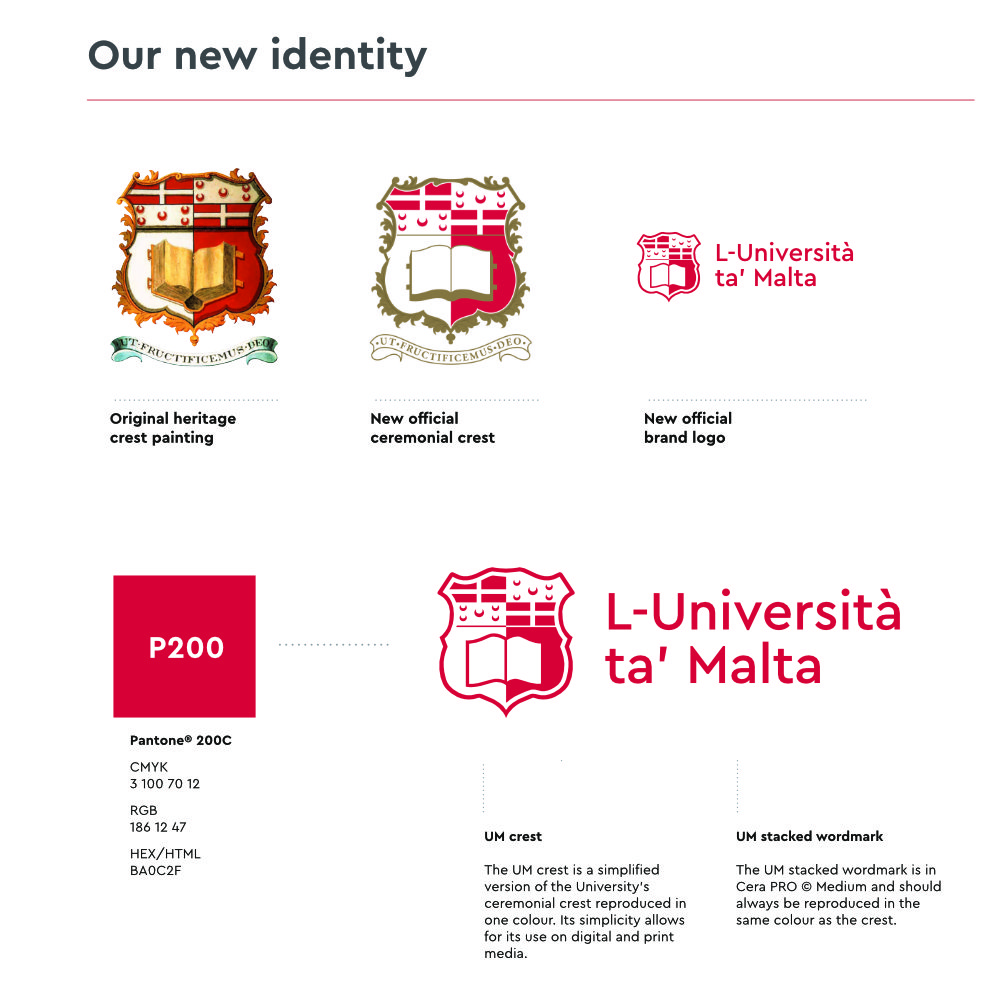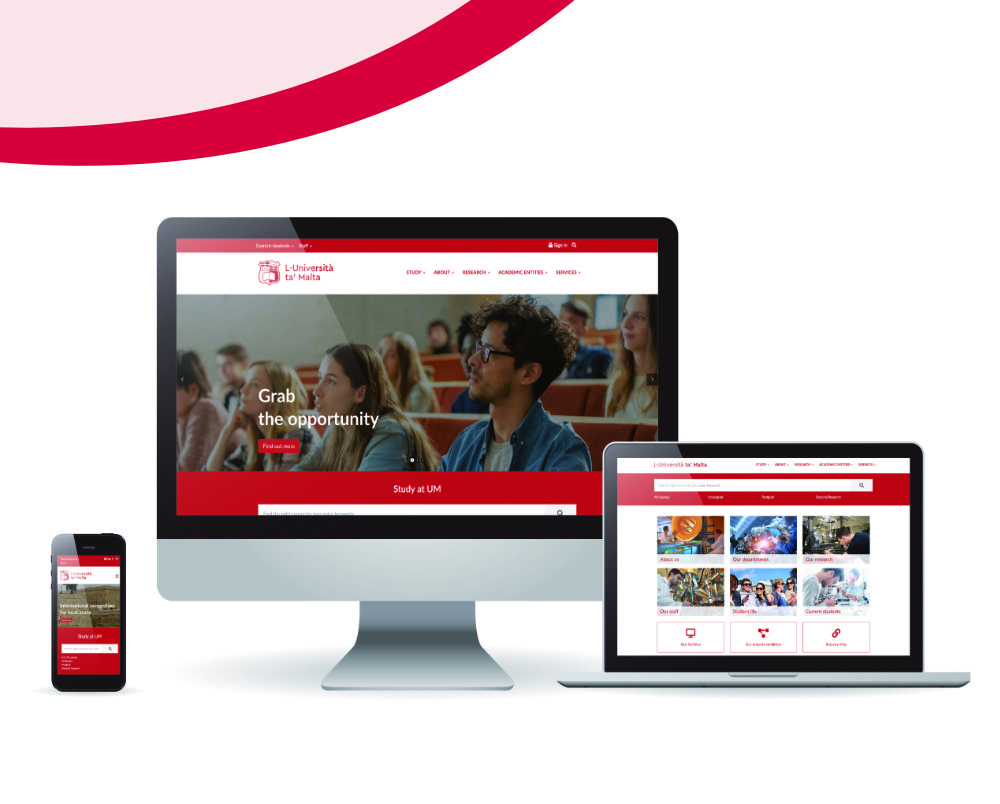
The history of the University of Malta spans 400 years, tracing its origins to the founding of the Collegium Melitense which was set up through direct papal intervention on 12 November 1592. As the only university on the island, it carries a rich academic legacy that needed to be reflected in a modernised yet historically grounded brand identity. The rebranding project aimed to balance the institution’s heritage with a refreshed, competitive visual presence that aligned with international standards while maintaining its unique identity. Additionally, the project sought to infuse a youthful spirit into the brand to make it more appealing to its primary audience—students.
The rebranding introduced a new primary logo that preserved the university’s historical significance while refining its form for a contemporary aesthetic. Alongside the main logo, a comprehensive sub-brand system was developed for each faculty and school within the university. This system ensures that while each department retains its individual identity, they remain cohesively linked under the overarching university brand. The new identity modernises the university’s image without losing its deep-rooted traditions while incorporating elements that resonate with younger audiences.

To ensure consistency across all university communications and materials, a new brand manual was created. This manual serves as a detailed guide covering logo applications, typography, imagery, and tone of voice. One of the key innovations was the introduction of an extensive colour palette, allowing faculties and schools to maintain individuality while adhering to a unified design structure. The expanded palette provides creative flexibility for designing university materials, ensuring that promotional and academic materials maintain a fresh and engaging look while staying aligned with the university’s brand essence. The colour selections and design approach were specifically tailored to appeal to a younger demographic, making the university’s identity more inviting to students.

Throughout the rebranding process, extensive user research was conducted to ensure the new identity met the expectations and needs of its diverse audience. A combination of student focus groups, faculty interviews, and online surveys was utilised to gather insights on how different stakeholders perceived the existing brand. Additionally, A/B testing was performed on various logo and website design prototypes to measure engagement, comprehension, and visual appeal before finalising the new look. After the launch, further usability studies were conducted to gauge the effectiveness of the rebrand, ensuring that it met both functional and aesthetic expectations across different user segments.
With the introduction of the new brand, the university’s website underwent a complete visual and structural update. The redesign aligned the university’s online presence with its new identity, enhancing usability, accessibility, and aesthetic appeal. By modernising the website in line with international university standards, the University of Malta now presents itself as a stronger competitor on the global academic stage, making it more appealing to prospective students, researchers, and international partners. The updated site also incorporated insights from usability testing to ensure seamless navigation and an improved student-centric experience.

This rebranding project successfully revitalised the University of Malta’s identity while respecting its historical significance. The cohesive new brand, structured sub-brand system, expanded design framework, and enhanced digital presence ensure that the university remains both recognisable and competitive in the evolving academic landscape. The addition of youthful energy to the brand strengthens its appeal to students, while the comprehensive user research ensures that every design decision was backed by data. The rebrand not only strengthens institutional pride but also positions the university for future growth, innovation, and global engagement.